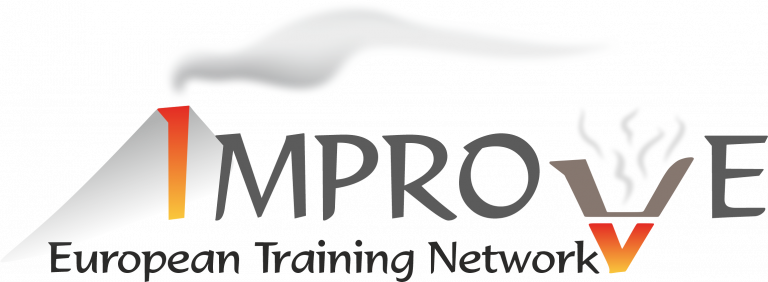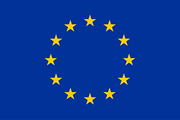Alejandra Vásquez Castillo

Alejandra Vásquez Castillo
Nationality: Colombian
Institution: Istituto Nazionale di Geofisica e Vulcanologia
Country: Italy
Research Title: At the origin of the Etna dynamics: insight on the volcano behavior by integrating in-situ and satellite-based (deformation/geophysical/volcanological) measurements
PROJECT SUMMARY
Mt. Etna is one of the best monitored and studied volcanoes worldwide. Its continuous activity and good accessibility facilitate conducting advanced studies to test new theories and implement new technologies. Despite this vast and continuously updated knowledge some crucial questions are still pending: how does the magma rise from the mantle to the surface? What is the structure of plumbing system? Does the regional/local stress field influence the magma uprising and/or the volcanic activity? Are the flank dynamics the cause or the effect of the volcanic activity?
Therefore, the goal of this research is to implement a formal system of interpretations of volcanological processes that are logically linked and lead to a coherent conceptual model of Mt. Etna’s structure and behavior. This main goal implies constraining the structure and dynamics of the active plumbing system and the shallow volcano edifice at Mt. Etna, as well as analyzing high-frequency GNSS and other geodetic data and evaluating their extended use to intermediate frequencies (i.e., between the seismic and the geodetic realms) to explore unknown or poorly known processes (in cooperation with ESRs #2, 8, 10 and 14). The approach includes, among others, the integration of in-situ (GNSS, tilt) and satellite (InSAR) ground deformation data and the analysis of high-frequency GNSS and tilt data as well as a comparison with broadband seismic data.
Scientific Background
I completed a degree in Cadastral and Geodetic Engineering at the University Francisco José de Caldas in Bogotá, Colombia. Building upon a mathematical-physical background this program provided me with the opportunity to learn about the discipline of geoscience. During my studies, I worked with geodetic surveying techniques as well as satellite image processing and interpretation. During this time, I developed a keen interest in geophysical data acquisition, processing, and interpretation. I got the opportunity to conduct gravity surveys for my undergraduate thesis, gaining expertise not just with field work but also with data management and analysis. After completing my degree, I began to work for the Colombian Geological Survey, where I worked on the calculation and mapping of gravity anomalies of Colombia based on satellite data. I also carried out fieldwork performing gravimetric surveys to investigate mud volcanism. Following this professional experience I moved to Germany to undertake the master’s program in Geophysics at the University of Hamburg. My background in both geodesy and geophysics has lead me to the field of volcanic geodesy and sparked my interest in studying the changing sizes and shapes of volcanoes. Therefore, in my master’s thesis I dealt with the measurement and analysis of ground deformation in two specific volcanic regions, Reykjanes (Iceland) and Sakurajima (Japan), using Interferometric Synthetic Aperture Radar (InSAR) and GNSS data.
My research interest therefore focuses on better understanding the nature of subterranean processes by using geodetic tools such as GNSS and InSAR to identify and characterize surface deformation. Since such deformation is often linked to volcanic and tectonic processes, I am interested in the modeling of ground deformation in order to estimate the location, geometry and dynamic of its sources.
Activity Record
Training Events Attended
| Data (from) | Data (to) | Type | Title | Venue |
|---|---|---|---|---|
| 6/11/2022 | 6/16/2022 | School | Geothermal and Magmatic Systems | Laugar, Reykjadalur, North Iceland |
| 6/17/2022 | 7/3/2022 | Multiparametric Experiment | Krafla multiparametric experiment | Krafla, Iceland |
| 1/21/2023 | 1/23/2023 | Specialized Short Course | Seismology and Imaging | ISTerre, Grenoble, France |
| 3/27/2023 | 3/29/2023 | Specialized Short Course | Volcano Geodesy | Bristol, UK |
| 5/15/2023 | 5/19/2023 | School | Geophysical data inversion and numerical forward modelling | Carlingford, Ireland (online) |
| 7/24/2023 | 7/28/2023 | School | Multiparametric Volcano Monitoring: Data Processing, Analysis and Modelling | Nicolosi (Sicily), Italy |
| 7/23/2023 | 8/2/2023 | Multiparametric Experiment | Etna multiparametric experiment | Mount Etna (Sicily), Italy |
| 11/25/2022 | 11/25/2022 | Training | European Plate Observing System - EPOS Users Test Meeting | INGV Roma |
| 2/9/2023 | 2/9/2023 | Digital Training Module | How to write your first paper and get it published | Online |
| 8/21/2023 | 8/25/2023 | Specialized Short Course | InSAR Processing & Analysis (ISCE+) Short Course | Online |
| 6/2/2023 | 8/29/2023 | Workshop | IRIS 2023 Seismology Skill Building Workshop | Online |
| 28/05/2024 | 31/05/2024 | School | Fourth Network School – Multi-facet Science: data, models, infrastructure, industry and communication | GFZ Potzsdam, Germany |
| 03/09/2024 | 06/09/2024 | Specialized Short Course | Static and Kinematic GNSS-based Positioning Using GIPSY/X | Space and Earth Geodetic Analysis Laboratory (SEGAL), University of Beira Interior, Covilhã, Portugal |
Other Activities
| Data (from) | Data (to) | Type | Venue | Title | Description |
|---|---|---|---|---|---|
| 5/17/2022 | 5/17/2022 | Field Trip | Mount Etna (Sicily), Italy | Etna Pizzi Deneri Field Trip | Visit to the Etna Pizzi Deneri Observatory |
| 11/9/2022 | 11/10/2022 | Field Trip | Napoli, Italy | IMPROVE on the Neapolitan Volcanoes | Excursion to Vesuvius and Campi Flegrei. |
| 5/30/2023 | 6/23/2023 | Secondment | University of Iceland | Secondment at University of Iceland | One-month secondment in Iceland on high-rate GNSS processing and analytical modeling of InSAR-observed deformation data |
| 05/07/2024 | 13/08/2024 | Secondment | University of Iceland | Secondment at University of Iceland | Secondment in Iceland on GNSS processing and analytical modeling of joint GNSS-InSAR observed |
| 23/08/2024 | 22/09/2024 | Secondment | Lancaster University | Secondment at Lancaster University | One-month secondment on analogue modelling experiments to analyze deformation processes |



